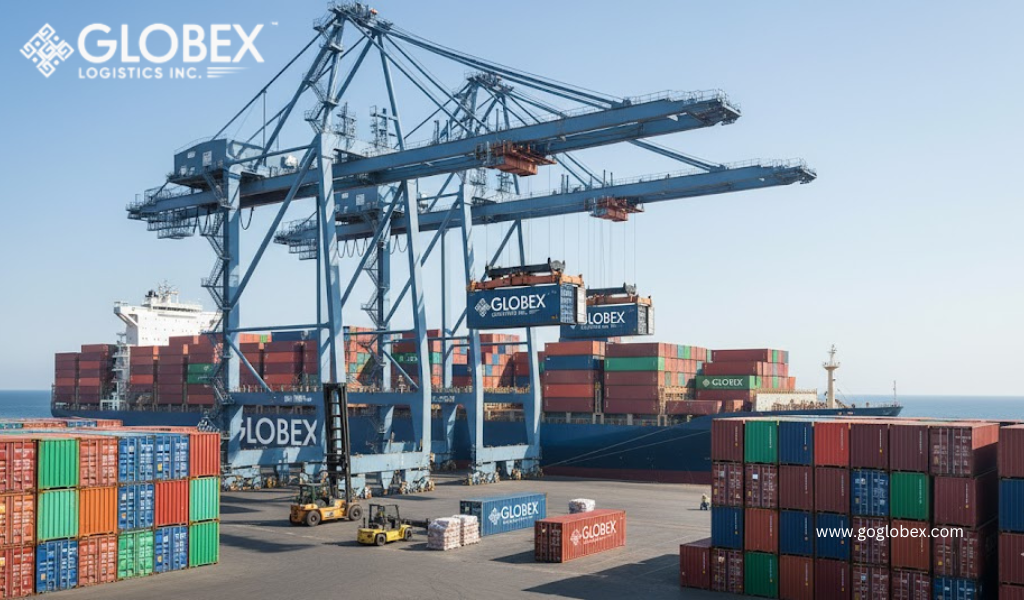
Top Supply Chain Management Solutions That Cut Costs and Boost Efficiency
In the global economy of the 21st century, driven by high-velocity supply chains, the need for supply chain management solutions is no longer a luxury — it has become a necessity. Logistics leaders in all industries are facing more pressure than ever to optimize operations, reduce logistics costs, and improve transportation speed and reliability. With just a small-sized company, or an international thing, optimising your supply chain is crucial to improving both your bottom line and your customer experience.
Through this blog we will highlight the best supply chain management solutions which will ensure reduction in cost as well as operational efficiency. And how logistics optimise, real-time freight visibility platforms, advanced inventory & demand forecasting, and seamlessly integrated supply chain can power this, to create seamless solutions for the future forward-thinking businesses.
What are Supply Chain Management Solutions?
Supply chain management solutions are systems, technologies, and processes that track a product from sourcing with raw materials to manufacturing and delivery. These tools enable business to surface visibility, mitigate inefficiencies and adjust to the market demand with agility.
Today charged with automation–carbon–copying artificial intelligence, machine learning, cloud-based platforms to gulp jobs that generate autonomous internal functional intelligent predictive insights, and seamlessly share data in real-time with partners, vendors and customers, respectively.
Optimising Logistics: Cutting Out Waste, Downtimes and Other Costs
Logistics optimisation is one of the most imminent strategies that can be undertaken to refine your supply chain. This involves optimizing transportation routes, cutting down on fuel costs, minimizing warehousing sites, and streamlining delivery time.
Key Benefits:
- Lower freight and transportation expenses
- Faster delivery timelines
- Improved use of resources and manpower
- Reduction in carbon footprint
AI-driven tools, such as route planning software and transportation management systems (TMS), are now being used to recommend the most effective routes and delivery methods to reduce expenses and enhance delivery reliability and performance.
Stay on Top of the Game with Real-Time Freight Visibility Platforms
Your supply chain can be easily damaged by delays, miscommunication and a failure to track. This is where freight visibility platforms come into action. Shipment Tracking — Having the ability to track the shipment now provides peace of mind for both businesses and customers, as there is real-time information available regarding the shipment status, location, and ETA using these digital tools.
Why It Matters:
- Prevents shipment loss or theft
- Enables proactive responses to delays
- Improves customer communication
- Strengthens carrier accountability
Whether transporting goods across borders or locally for last-mile deliveries, having transparent, trackable data provides a competitive advantage while improving the reputation of your brand.
Inventory & Demand Forecasting: Smarter Predictions, Better Stocks
As such, it stands to reason that overstocking and understocking are costly errors. Using historical data, seasonal trends, and market behavior, inventory & demand forecasting tools help businesses anticipate the number and type of products customers will be purchasing and when.
Strategic Advantages:
- Minimize overstock and carrying a cost
- Avoid out-of-stock scenarios
- Increase working capital efficiency
- Balance supply with real purchasing behaviour
Cloud-based platforms for inventory forecasting enable live flexibility to be done, which helps businesses react promptly to demand changes. This is particularly beneficial in industries that experience high seasonality or fluctuating customer demand.
Integrate Your Whole Network — Supply Chain Integration
Disconnection is one of the major issues in supply chain management. When systems do not communicate with each other, information silos emerge, causing delays in decisions and increasing the chances of very costly errors.
This is where supply chain integration comes into play, integrating various systems, departments, and partners into a single, seamless ecosystem. Which can be done via APIs, ERP platforms as well as collaboration cloud portals.
Integration Perks:
- Better communication among suppliers, producers, and distributors
- Connected Flow of Data Across All the Channels
- Simplified processes, Order – fulfilment – deliver
- Enhanced scalability for business growth
Integrated supply chains are also more resilient to disruptions and capable of catering to multi-channel operations (for example, e-commerce along with in-store logistics).
The Role of Supply Chain Management Solutions in Driving Business Growth
Supply chain management is an umbrella term used for solutions providing various benefits to businesses, and a right implementation does not just save money but is an enabler of sustained growth. Companies that choose to use these solutions are often rewarded with:
- Lower operating costs
- Faster go-to-market times
- Higher customer satisfaction
- Better supplier relationships
- Stronger resilience to market disruptions
As your company starts to grow, investing in the right tools early can help minimize scaling issues down the line. From upgrading to automated inventory systems to finding new analytics software, the ROI can be huge.
Generating New Businesses With Streamlined Supply Chain
As a supply chain service provider or logistics consultancy, you can gain high quality leads for your logistics optimisation, freight visibility platform and supply chain integration solutions by showcasing your expertise. Businesses are on the lookout for partners that can help them with:
- Reduce costs while continuing to deliver quality service
- Adopt modern, AI-powered SCM technologies
- Navigate global supply chain challenges
Your offerings must deliver tangible results — cost reduction, productivity improvement, and real-time visibility, just to name a few. Client case studies or performance benchmarks used in outreach or content marketing can make your business look like an authentic supply chain partner.
Conclusion
Only by implementing the ideal Supply Chain Management Solutions can businesses reduce operational costs and refine efficiency. These tools range from sophisticated inventory & demand forecasting to real-time freight visibility platforms and end-to-end supply chain integration to help businesses remain competitive, responsive, and resilient. Scaling your operations, or simply looking to optimize your logistics; with the right supply chain management solution, you will have nothing but success and growth for your business in the long run.
FAQs on Supply Chain Management Solutions
1. Best Supply Chain Management Solutions For Small Businesses.
Cloud-based platforms that provide end-to-end functionality (i.e., covering inventory management, logistics, and real-time analytics) are especially useful for small businesses. Seek scalable solutions with e-commerce or accounting software integration.
2. How can I make logistics more efficient in my supply chain?
Implement logistics optimisation tools powered by AI for route planning, warehouse management and freight scheduling. Enhancing inter-departmental coordination and visibility may also eliminate delays and save money.
3. What is the importance of inventory forecasting in Supply chain management?
With its help, businesses can decide what products they need to stock and when, which aids in minimizing surplus inventory and eliminating stockouts. Enhanced cash flow, higher customer satisfaction, and increased operational efficiency are some of the positive side effects it produces.
Recent posts
categories





